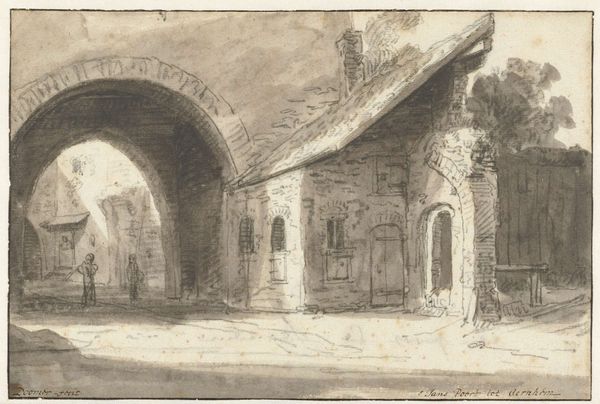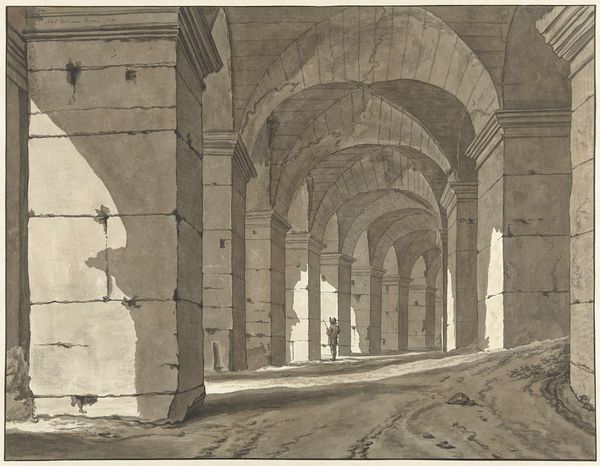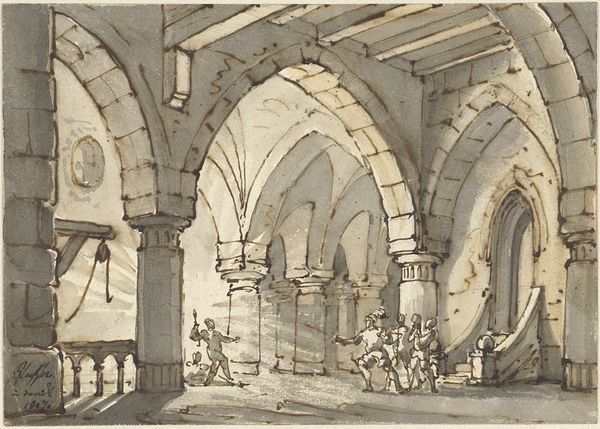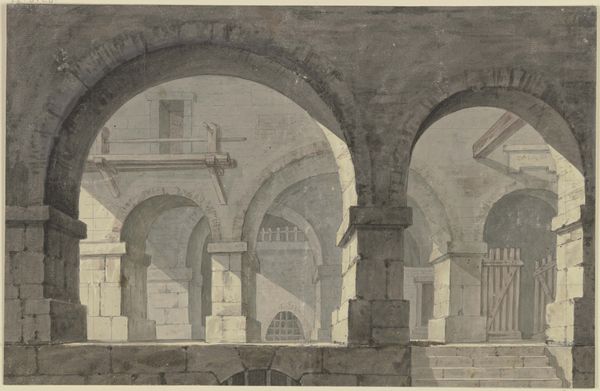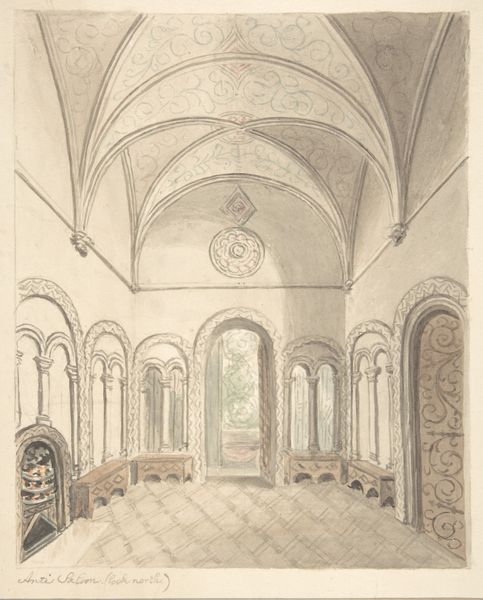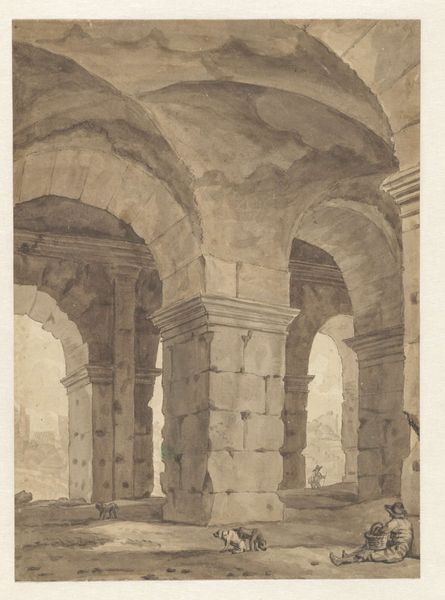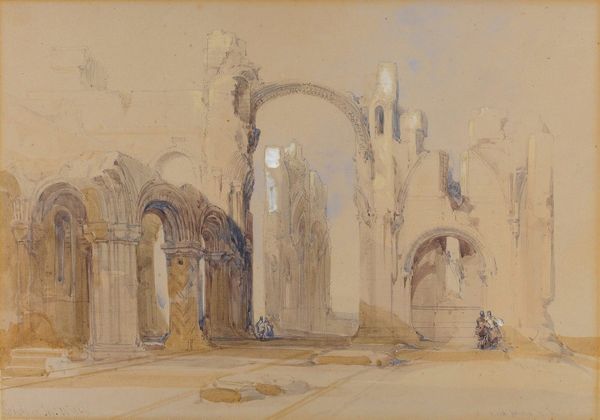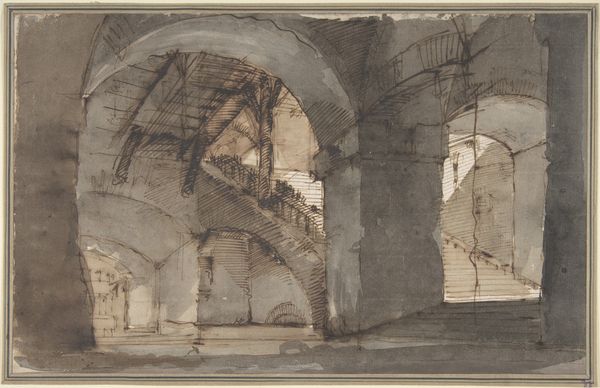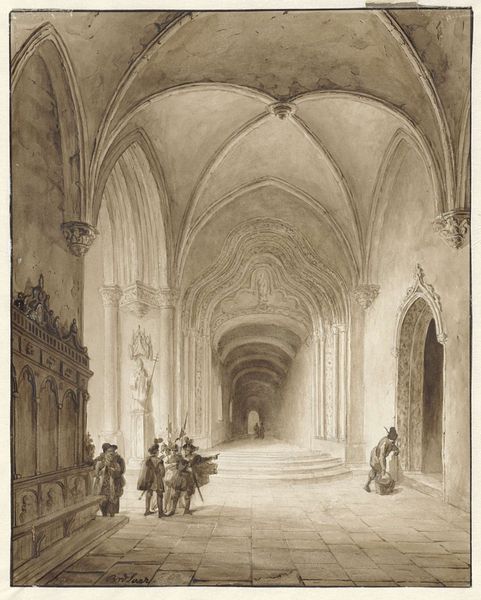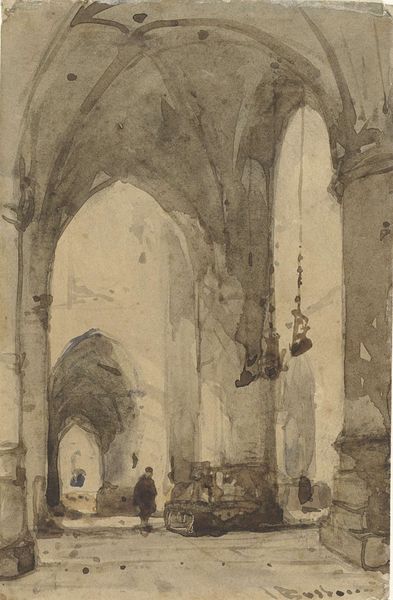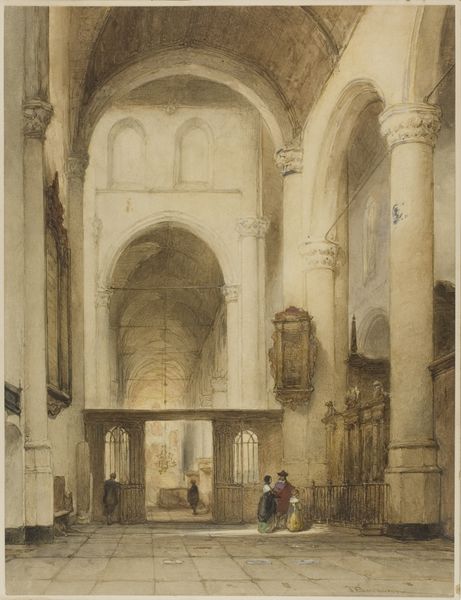
Interieur van S. Hilaire te Poitiers, met knielende figuren aan de Confessio 1802 - 1871
0:00
0:00
drawing, painting, paper, watercolor, ink, architecture
#
drawing
#
painting
#
landscape
#
charcoal drawing
#
paper
#
oil painting
#
watercolor
#
ink
#
genre-painting
#
watercolor
#
architecture
#
realism
Dimensions: height 285 mm, width 393 mm
Copyright: Rijks Museum: Open Domain
Editor: This is "Interieur van S. Hilaire te Poitiers, met knielende figuren aan de Confessio" by Alexis Nicolas Noël, created sometime between 1802 and 1871. It looks like a watercolor and ink drawing on paper, maybe with some oil paint? I’m really drawn to the architectural details and how light filters through the arches, but I also notice the kneeling figures—they almost seem secondary to the space itself. What can you tell me about this work? Curator: This piece offers a fascinating lens through which to view 19th-century notions of faith, power, and societal roles. Noël chooses not to focus solely on the religious ceremony or the individuals participating in it. Instead, his focus rests on the architectural immensity of the church itself. It's difficult to ignore the emptiness. What impact do you think this compositional choice makes? Editor: Well, by deprioritizing the people, he seems to be saying something about the Church as an institution, or maybe just about the scale of religious faith against our individual existence? Curator: Precisely. And look at the medium—watercolor and ink lend themselves to capturing light and shadow, the very elements that give the architecture its grandeur and its solemnity. Think about the era—the aftermath of the French Revolution and the Napoleonic era—and the Church's struggle to reassert its authority. How does that inform your view of this painting? Editor: So the grandeur, in this context, isn't just about aesthetics but a deliberate display of institutional power. Is that connected to why you describe yourself as an activist, approaching art this way? Curator: Exactly. My approach looks at how these artistic choices reflect and reinforce existing power structures within society. The muted color palette, the overwhelming scale of the architecture—they all contribute to a narrative beyond just a depiction of a religious service. It challenges the dominant narrative. Editor: This really makes me think differently about historical art; I normally don't see these kinds of underlying cultural currents. Curator: That is why art historical examination through different cultural contexts gives new perspective into artworks, inviting ongoing discourse and a deeper understanding.
Comments
No comments
Be the first to comment and join the conversation on the ultimate creative platform.
